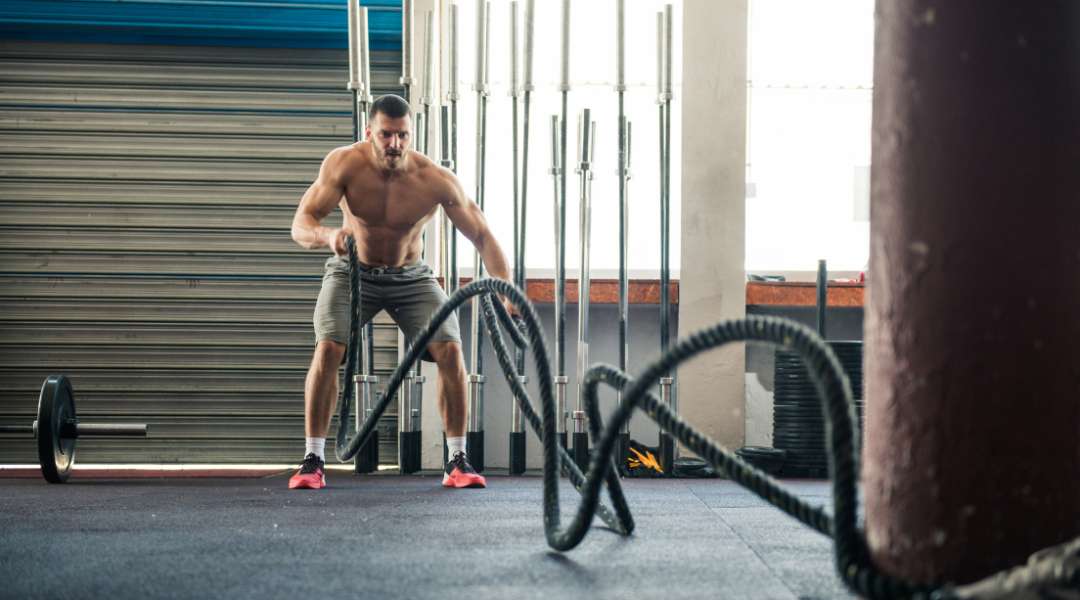- Launch Your Training Today! We're available 24/7 by Appointment Only.
- (615) 329-2747
- info@nextlevelfitness.com
How to Increase Your Endurance and Stamina
Functional Strength: A Key to Injury Prevention
April 15, 2024
Why is it Important to Assess Muscle Balance?
May 9, 2024Welcome to a guide on boosting your body’s power and lasting ability. Stamina lets you stay active longer without feeling worn out, while endurance means staying strong through long workouts and getting better over time.
You want to do more and feel great doing it, right? Let’s explore how you can build up these key fitness traits with the right mix of muscle work and heart-pumping exercises! Get ready for tips that will help you ramp up your gym sessions for maximum results.
Understanding Endurance in Nashville’s Climate
In Nashville’s climate, building endurance isn’t just about hard workouts. It means tuning into how your body handles heat and humidity. As you exercise more, you get better at dealing with the stress from long runs or rides.
Here’s a key:
- Start slow on hot days to avoid overdoing it early on.
- Let your muscles warm up gently in that Southern warmth.
- Do squats.
They work many muscles all at once! That kind of move prepares you for real life, where lifting bags or climbing stairs also takes stamina.
You’ll also want to shave down those breaks between sets. When rest times drop, your heart and lungs learn quickly. They have to keep up without much pause during each session! And remember variety—the spice of training!
Mix things up often so your muscle groups don’t get lazy with routine exercises only. By increasing workout lengths bit by bit while focusing on form rather than rushing through reps, you safely extend what time under tension does for stamina. With these tactics embraced specifically within our city’s unique, hot, but spirited conditions, you prime yourself steadily for enduring success here in Music City.
Incorporate Progressive Cardio Training
Start with cardio, which grows more challenging over time. Think of it as pushing a bit more each session or week. For example, if ten reps at 100 pounds are your squat now, aim for twelve next time or lift 105 pounds for the same ten reps.
Increasing weight and intensity gradually will make you stronger. Long walks are also key here. They’re great for beginners to gain endurance. Aim for half an hour up to an hour. If you’re beyond beginner level, increase how fast and hard you walk to boost stamina.
Integrate Strength Workouts for Stamina
Strength workouts are key to building stamina. Think of how you push off when running. That’s the drive phase crucial in all endurance sports. By boosting force during these moments with resistance exercises, you get faster.
You need quick power for speed. That comes from muscles contracting fast and hard. Imagine this: When your foot hits the ground while running, less time there means more speed. Strength training achieves just that by increasing force in a snap! The same goes for cycling or swimming. Powerful strokes make you quicker.
Moreover, strong connective tissues act like springs. They store and release energy without extra oxygen cost when moving. Hit those weights twice weekly, but keep it smart. Avoid bulking up to prevent slowing down. Use heavy lifts and high-velocity movements to increase strength and pace without overly expanding muscle size.
Balanced Nutrition for Sustained Energy
Balanced nutrition fuels your body and mind, keeping you alert and active. However, your energy dips when meals are skipped or you lack critical nutrients like magnesium. This mineral powers over 300 body reactions. Even slight shortfalls can sap strength, as research from the US Department of Agriculture reveals.
Keep up with vitamin-rich foods to avoid fatigue. Women need about 300 milligrams of magnesium daily; men require around 350. If tiredness hits, get moving! A brisk walk does wonders for invigorating both brain function and mood.
And don’t forget a power nap. It’s proven to reset your mental sharpness effectively.
Staying Hydrated the Music City Way
When you work out, your body loses water. You need to replace it to keep going strong. Even if you’re not thirsty, drink up. Thirst means you’ve waited too long and might already be dehydrated.
Check the color of your pee for clues: Light means right; dark is a sign that more fluids are needed immediately. No sweat during tough exercises? It screams dehydration and could mean heat exhaustion knocking at your door.
To stay in top shape when active, especially here in Music City, where the tempo runs high and hot–drink well before feeling parched. When we say “well,” we don’t just mean quantity but also what kind. Clear fluids typically do best (think water or sports drinks). Skip sugary sodas or booze as they can sap instead of supply moisture to those hard-working muscles.
Remember this simple rule after exercising: more fluid equals better cooling down. Aim for pale-yellow urine as evidence that hydration’s on point.
Prioritize Rest and Recovery Techniques
Your body needs sleep to heal muscles and refresh vigor. Aim for seven to nine hours each night; it’s key for recovery.
Don’t think of rest days as lost time. They’re vital in keeping injury at bay while enhancing muscle buildup. Also, adopt relaxation methods like deep breathing or light yoga stretches that help relax tense areas after a hard workout session.
Remember: pushing limits without adequate off-time spells trouble. Solid endurance springs from harmonizing hard training schedules with needed leisure. Make sure not only your workouts count but also the silent moments. That’s where rejuvenation truly happens. Keep these resting rituals close, always within reach.
Adapt to Elevation with Outdoor Activities
When you train up high, your body works hard to get used to less air. This can make you stronger and faster when you return to lower ground. Some athletes do this for a small edge in big races. It’s tough, but it may pay off with a win or record.
High places like mountains challenge your lungs and muscles, making it harder to guess how tired you are. It feels different. The air is thin, and you might go slower than usual or feel worn out quicker. But even if racing isn’t your thing, hiking or skiing on vacation could push your limits, too.
Up there, just seven days might boost blood cells, and so does training longer, but don’t rush into competing right after coming down. Give yourself time before an event so your performance shines without sickness holding you back.
Boosting your endurance and stamina starts with regular exercise tailored to your goals. Prioritize a mix of cardio, strength training, and flexibility exercises. Remember that rest days are as vital as workout days for recovery.
Balanced nutrition fuels performance. Stay hydrated, too. Over time, steadily increase the intensity of your workouts at Next Level Fitness for sustained improvement. It’s about gradual progress rather than quick fixes! Keep track of milestones: they inspire you to keep pushing forward. So, lace up those sneakers. Let’s elevate your fitness journey together!
Warning: Trying to access array offset on value of type null in /var/www/wp-content/themes/betheme/includes/content-single.php on line 286




